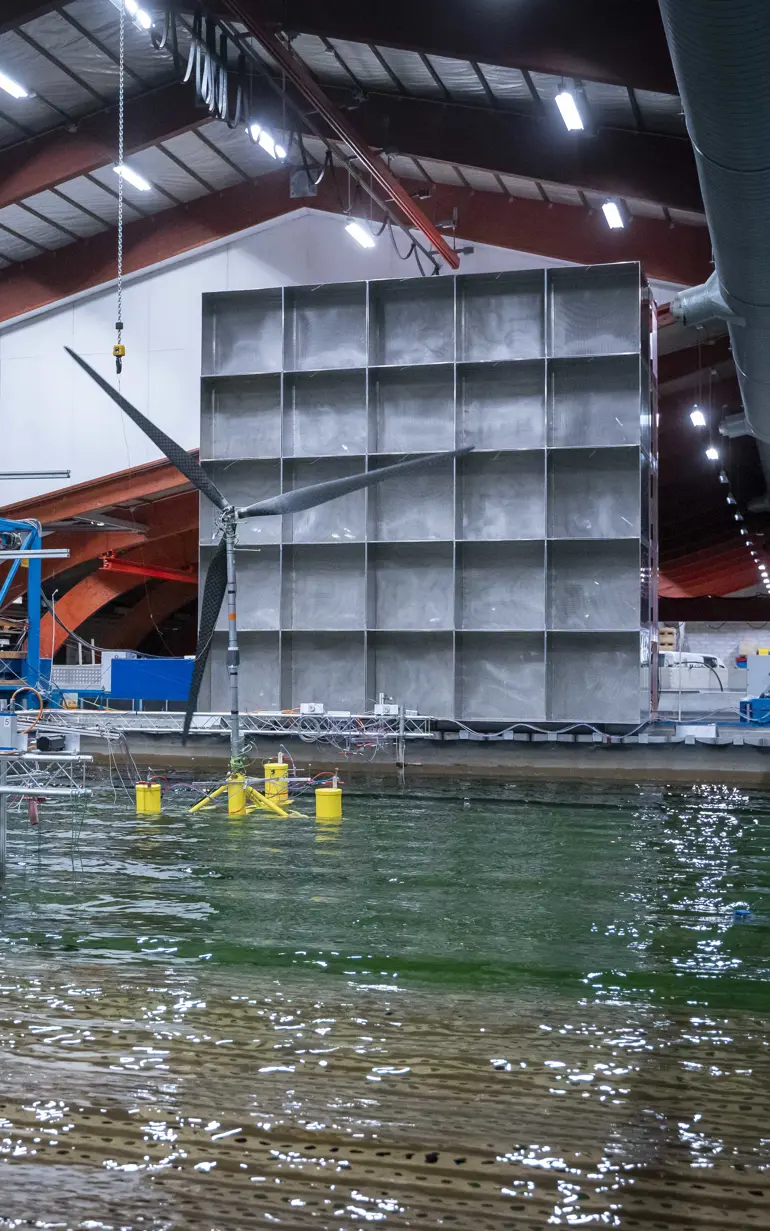
World’s largest open-jet wind generator now in operation at DHI
DTU Wind and DHI have successfully developed, installed and tested the world’s largest open-jet wind generator for floating wind tests – a major milestone in advancing the physical testing of floating offshore wind turbines.
With its 5x5m area, the wind generator can blow up to five metres per second, corresponding to a prototype wind speed of approximately 40m/s with a model scale of 1:70. It is therefore believed to be one of the world’s most powerful. Combined with 3D waves with directional spreading in DHI’s ocean basin, the facility enables comprehensive testing of floating wind turbines under operational and extreme conditions.
The wind generator is a key deliverable in the FloatLab research project and will allow the team to perform test campaigns that simulate extreme offshore conditions using realistic wind and wave interaction. The FloatLab project aims to ultimately reduce risks and validate engineering models used for turbine and floating foundation design in the offshore wind sector.
‘In our spring test campaign, we have documented its performance and applied it to test a design variant of Stiesdal Offshores TetraSub concept,’ says Henrik Bredmose, Professor at DTU Wind. ‘Each of the 25 fans operates as part of a synchronised system. Very much like voices in a choir, singing a very coordinated melody,’ says Henrik Bredmose. ‘The fans replicate the turbulent inflow that turbines experience offshore. So now, we can physically recreate turbulence in a controlled lab setting for floating wind.’
In the tests, the project team uses a scaled version of the IEA Wind 22-megawatt turbine, mounted on a variant of the Stiesdal TetraSub floating foundation. It is already built and installed at DHI’s wave basin facility in Hørsholm, Denmark.
Measurements of the tests will be connected directly to calculation models in a digital twin setup. The aero-hydro-servo-elastic response of the floater and turbine in wind and waves can then be simulated and studied, potentially improving accuracy and reducing risk.
‘With the wind generator now in operation, we can replicate offshore wind and wave conditions more realistically than ever before,’ says Pietro Danilo Tomaselli, Senior Hydraulic Engineer and Head of FloatLab activities at DHI. ‘This gives DHI and DTU Wind a unique opportunity to optimise floater designs, improve turbine control systems, and validate engineering models, ultimately making floating wind a more reliable and cost-effective solution for the green transition.'
About FloatLab
The project addresses a critical bottleneck in the development of floating offshore wind: the lack of precise, validated design tools that reflect the full complexity of offshore environments.
With floating wind projected to make up a large share of new offshore capacity by 2030, accurate testing and digital modelling are essential to bring down costs and increase reliability.
FloatLab is funded by Innovation Fund Denmark and will run until 2027. The consortium brings together DTU, DHI, Siemens Gamesa, Stiesdal Offshore, Stromning and Ørsted.
How can we help?
With our global network of offices, we make sure you get the right answers to your local needs. Tell us about your water challenges and we will get back to you.